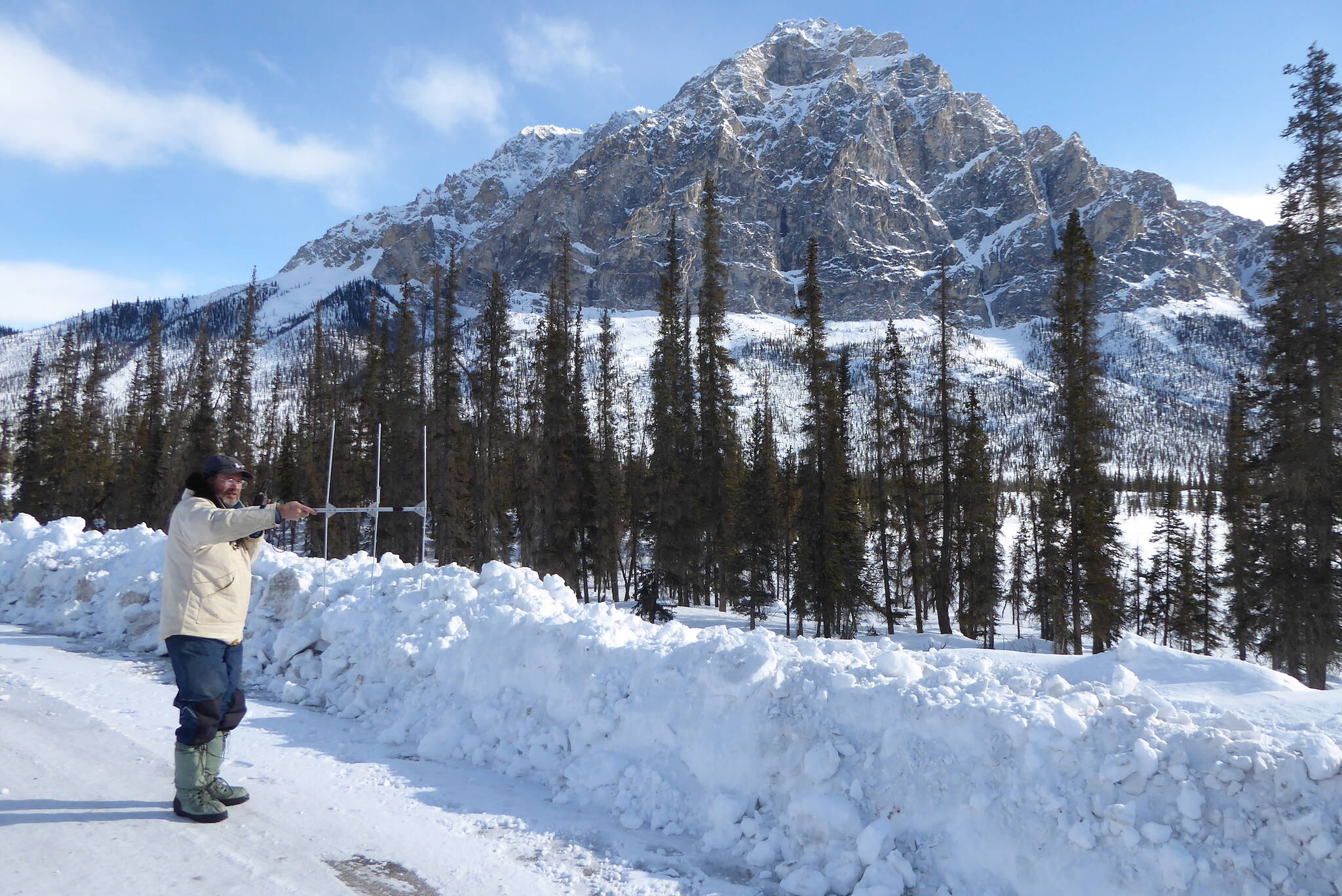Though the calendar calls it springtime, the thermometer on the truck reads minus 28 F on this sunny morning a few days past spring equinox.
I am riding shotgun with Knut Kielland, an ecologist at the Institute of Arctic Biology at the University of Alaska Fairbanks. He has invited me to join him for a week north of the Arctic Circle — 66.6 degrees north latitude, about 150 miles from Fairbanks.
We have crossed the imaginary line the easy way, by driving three hours north of Fairbanks on the Dalton Highway, built in the early 1970s to enable the construction of the trans-Alaska pipeline.
Kielland is here to live-trap lynx, and to slip collars on them that will enable him and others to see where the boreal-forest cats roam. In this study executed by scientists from several agencies in Alaska and Canada, he and others have found lynx have mysteriously trotted very far from the valley drained by the middle fork of the Koyukuk River. For example, one lynx trotted to the mouth of the Yukon River, another to northern British Columbia.
Kielland is encouraged today because one of his trail cams outside an open cage trap has a lynx filling a photo frame. Our task for the day is setting the traps using a “concoction” of scent he mixed including fish oil and dried beaver castor (a gland within the beaver that smells surprisingly pleasant).
As we drive north from the truck stop/restaurant/motel at Coldfoot, Kielland slows the Chevy Suburban near a small, frozen creek.
“Keep a lookout for a bear-looking thingy,” he says. “A musk ox has been hanging around in these woods.”
And there it is, a brownish-white lump amid live and dead spruce trees. Though it is 100 yards away, we see the musk ox digging at the ground with its cloven hooves, perhaps in the act of feeding on some vegetation under the snow.
Though he first came to Alaska to work on a musk ox farm near Unalakleet in the 1970s, Kielland says he has no idea what this animal might be doing in the forest so close to all the big trucks bringing stuff to and from the oilfields north of us.
Musk oxen are creatures of the tundra — of which there is quite a bit on the North Slope, just 60 miles away on the other side of the Brooks Range. Locals in Wiseman offered that this musk ox might be a lone bull driven from the rest by a more dominant one who stayed north with his harem.
Survivors from the last Ice Age, musk oxen are huge; even females weigh a quarter ton. The creatures disappeared from Alaska in perhaps the late 1800s, but professionals with the U.S. Biological Survey imported 34 from Greenland to Alaska in 1930.
From that hardy stock that lived and multiplied on Nunivak Island off the coast of southwestern Alaska, biologists transported 51 to Barter Island in 1969 to 1970, and at the same time 13 more near the Kavik River, about 100 miles west of Barter Island.
This musk ox of the northern forest near Wiseman is probably related to those pioneer creatures. In the early 2000s, scientists documented grizzly bears wrestling down, killing and feeding on the far-north musk oxen, putting a dent in their numbers.
Maybe hanging out in the forest by the road is a good way to avoid the only predator that would mess with a musk ox (though grizzlies and black bears are still hibernating). We drive by the lonely animal with the mystery unsolved.
Not much farther north, we see a hillside lobe of soil and drunken trees flowing slowly toward the highway. It is one of 23 “frozen debris lobes” identified by UAF and state-agency scientists. Since I last walked through this area in 2017, workers for the Alaska Department of Transportation and Public Facilities re-routed the highway away from a boreal blob that has oozed downhill more than 30 feet each of the last couple years.
Scientists describe the flows as a landslide in permafrost. They are striking now, in late winter, snowy tongues reaching into the dark green forest.
Next week, I will describe live-trapping lynx with Kielland, and the project in which he’s involved that has revealed so much about the wild cat that roams farthest from the equator.
• Since the late 1970s, the University of Alaska Fairbanks’ Geophysical Institute has provided this column free in cooperation with the UAF research community. Ned Rozell is a science writer for the Geophysical Institute.

